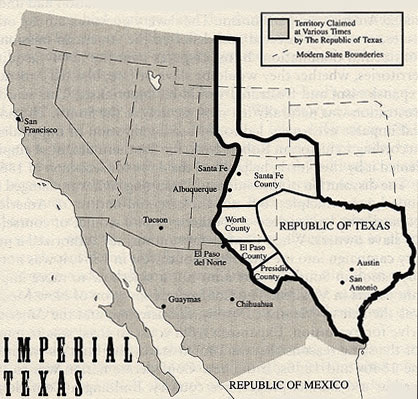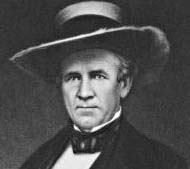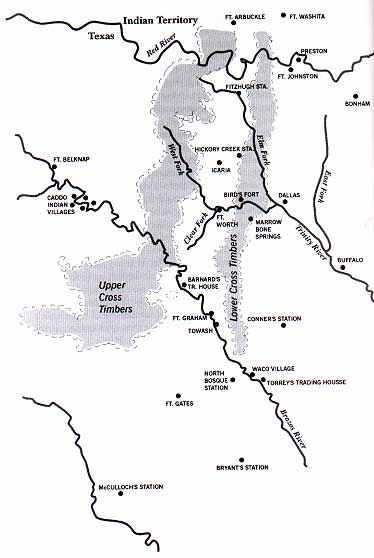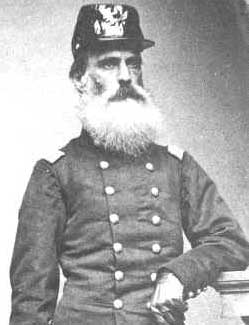|
In 1845, Isaac Spence and a partner obtained the rights
to open a trading house on the Trinity. A.G. Kimbell and partner had
previously established a post somewhere between Fort Worth's hospital
district and the Botanical Gardens, which was operated for about a year
by Edward Terrell and John P. Lusk until they were temporarily captured
by hostile Indians. In September, Spence reported to officials in Austin
that Ranger Colonel Smith and two Indian chiefs helped him select the
site called Marrow Bone Spring.
…the most suitable place for the Trading House and the one where
all the Indians wish it to be placed. I have put up a House 36 feet
long by 16 feet wide with a frame roof, covered with two foot boards
nailed and enclosed with half logs as pickets fastened together in a
substantial manner, I am putting up some other necessary outbuildings
for our convenience comfort and security all of which I am having enclosed
with strong and substantial pickets.

Map of Imperial Texas from the book, Blood & Treasure, by Donald S. Frazier
Texans were divided on the issue of statehood. Pioneers
wanted all the border protection they could get but generally were against
surrendering control to any government, much less one as distant as
Washington on the Potomac. Many Texans believed if there was to be an
alliance with a distant power, it should be Britain, who coveted San
Francisco and offered expansion of Texas territory to the Pacific.

Andrew Jackson
Acquiring Texas had long been one of Andrew Jackson's dreams. He sent
his protégé, Sam Houston, there in 1832 to cool the Indians
in the name of the United States. The hero of the Battle of New Orleans
could hardly sit still for a British Texas. He spurred another protégé,
James Polk, into the presidency on the platform of immediate Texas annexation.
Liberal conditions included the U.S. delivery of cash, soldiers and
forts while Texas retained all its public land, the right to fly its
flag at the same height as the stars and stripes and divide itself into
six states. That is, assuming of course, there could ever be an agreement
on which state would get the Alamo.

Sam Houston
It was the public land issue that caused the United States trouble
in its negotiations with the Indians. It promised but couldn't deliver
Texas soil to the Comanches, nor could anything do much to curb western
expansion. Following the treaty at Bird's Fort when Houston was confronted
with Comanche complaints about the absence of a permanent border, he
sadly shook his head and said, "If I could build a wall from the
Red River to the Rio Grande, so high that no Indian could scale it,
the white people would go crazy trying to devise a means to get beyond
it."
On December 29, 1845, Texas became a state, sparking a war with Mexico.
As the armies moved to the south, the frontier was left unprotected
and the governor ordered new Ranger companies to protect the settlements.
Companies were sent to Bryant's Station, about eighteen miles south
of today's Temple, Torrey's Trading House near today's Waco and stationed
at the trading house at Marrow Bone Springs. Captain Andrew Stapp's
company from Collin County took charge of the Marrow Bone Station. He
subsequently split his force, ordering William Fitzhugh to establish
an outpost on the Elm Fork of the Trinity, about ten miles south of
the Red River. (An 1852 Peters Colony map indicates the outpost to be
about three miles southeast of Gainesville off of Farm Road 372.) Stapp's
men were ordered to maintain contact with Fort Washita, located near
Durant, Oklahoma about forty-five miles northeast of Fitzhugh Station.
Enlistments ran out in February of 1847 and the reorganized company
was given to Fitzhugh, along with a promotion. He sent part of his men
thirty miles south to Hickory Creek where they built a post on the edge
of Denton. (The Peters Colony map shows the Hickory Creek Station about
one mile northeast of Pilot Knob or about two hundred yards southwest
of where I-35W crosses Hickory Creek.)

Map from the book, The Fort in Fort Worth, by Clay Perkins
In the summer of 1847, Lieutenant Colonel Peter H. Bell
was overall commander of the Ranger companies on the frontier including
Middleton Tate Johnson's. They were stationed near Torrey's on the Brazos
and Captain Shapley Ross' was ordered to establish a post on the North
Bosque, fifteen miles above Torrey's. In January of 1848, Johnson was
ordered to move his company to Marrow Bone Springs which they renamed
Kaufman Station but was widely known as Johnson Station.
Indian agent Neighbors argued against these moves because along with
a lax policy, they encouraged white settlement far to the west. (Dillingham
Prairie in southern Jack County was first cultivated in 1847.) In May
of 1848, Captain John Conner led his company to Smith Station on Richland
Creek, about four miles west of today's Milford. Early in 1849, most
of the companies were mustered out and the army was to station dragoons
in their place. Colonel Johnson claimed Marrow Bone Springs, as the
last of the Peter Colony contract had expired. He expressed his dissatisfaction
with the fact that the army was only manning Torrey's and Conner's Station,
which left him and countless other settlers on the northwestern frontier
unprotected. The army responded by establishing Fort Worth.

Samuel H. "Paddy" Starr
Major Arnold and his dragoons built the original post at Cold Springs
and then reestablished it on the bluff of the Trinity where Tarrant
County Courthouse now stands. Major Starr arrived on Christmas Day,
1849 with badly needed reinforcements. They had come up the Trinity
as far as the port at Buffalo on the steamboat, Jack Hays. Together
the soldiers completed the newly designated "Fort" Worth the
next year. During the next few years, Arnold and Starr organized and
conducted vigorous patrols and occasionally punitive strikes between
the fort and the Red River. Starr went on to earn a heroic record and
the loss of an arm during the Civil War, after which he returned to
the North Texas frontier and established the post at Jacksboro in 1866.
It's always gratifying to find dedicated people involved with our pioneer
history. Lea Ann and I were on a field trip to the reenactment at Fort
Richardson the Fall of 2001 where we spotted Willard Thomas being assisted
in adorning a sash which topped off his Dragoon General's uniform. Unfortunately,
we are having trouble getting the pictures on the web at this time but
just the same, meeting Willard was a fortunate occurrence. He gave us
a tour of the Heritage Room in the courthouse as well as Heritage Park,
just to the northwest, which overlooks the Trinity where the traildrivers
used to bed down their herds. We then visited the Pioneer
Rest Cemetery and admired the new memorials installed honoring the
unknown soldiers who are now known thanks to Willard's dedicated efforts.
I also include Willard's short history of the
fort in Fort Worth.
Click here for Julia Kathryn Garrett's description
of Fort Worth history from her book, Fort Worth, A Frontier Triumph.
She was a legendary history teacher at Arlington Heights High School
and an invaluable figure in the preservation of Texas History.
|




